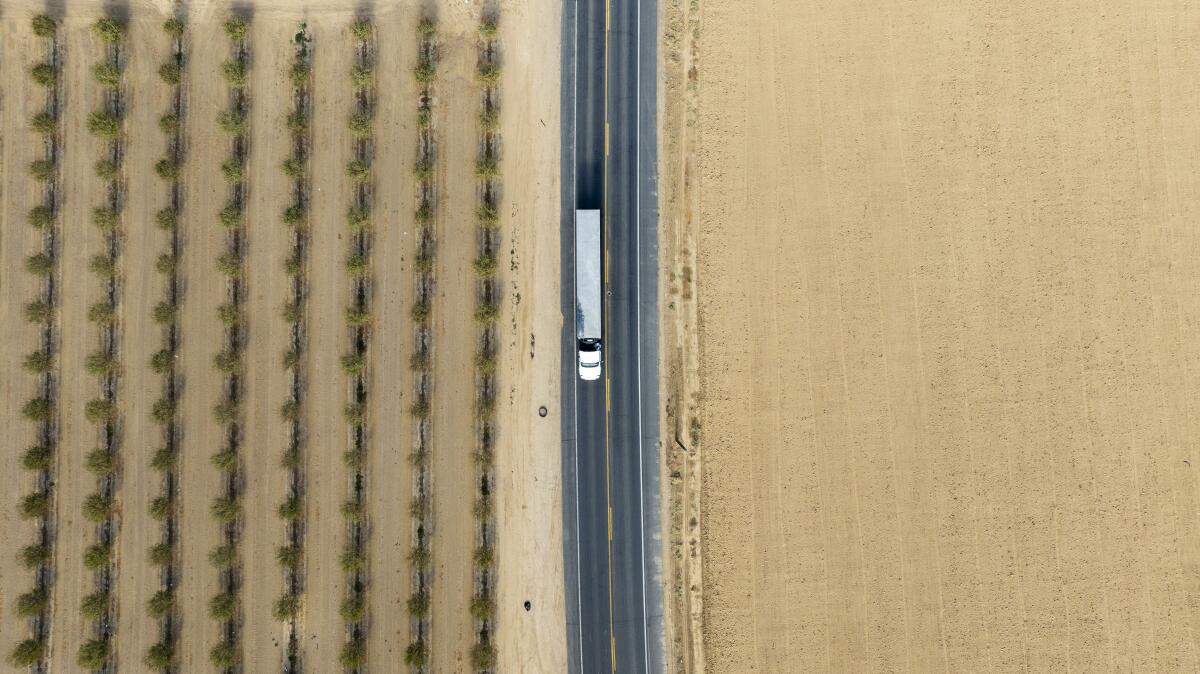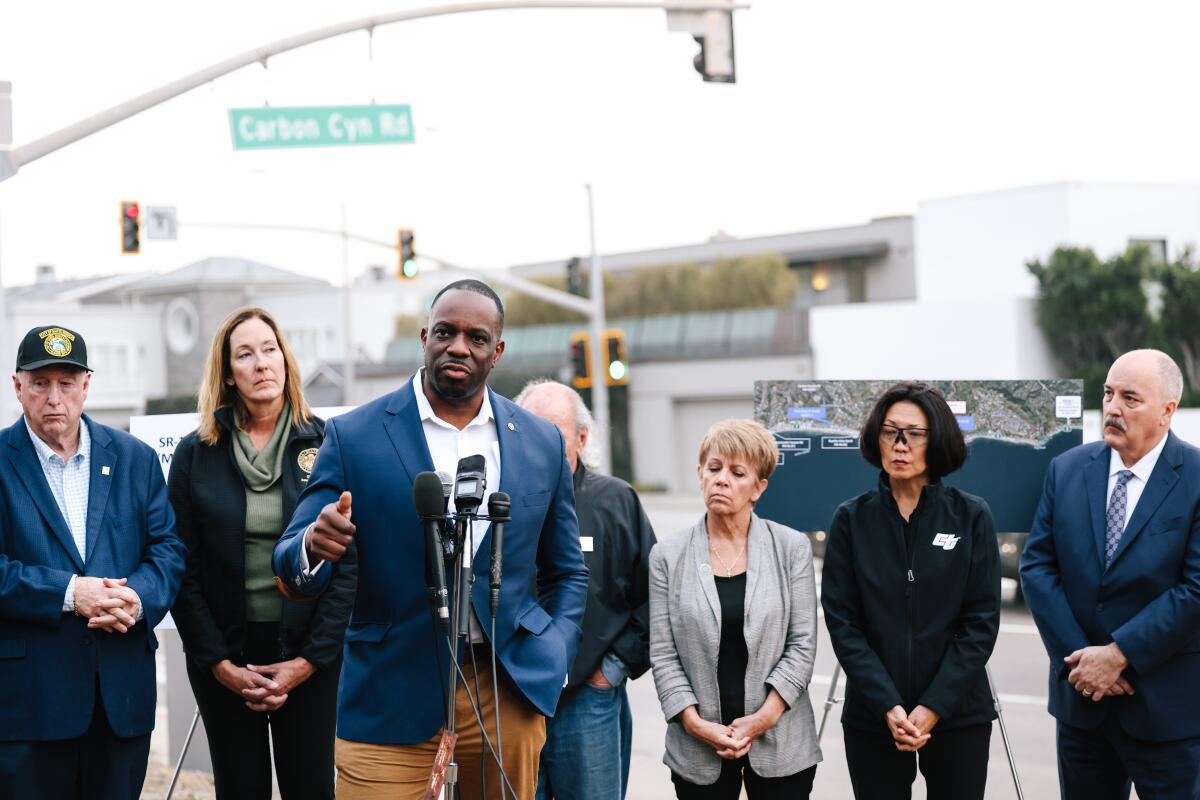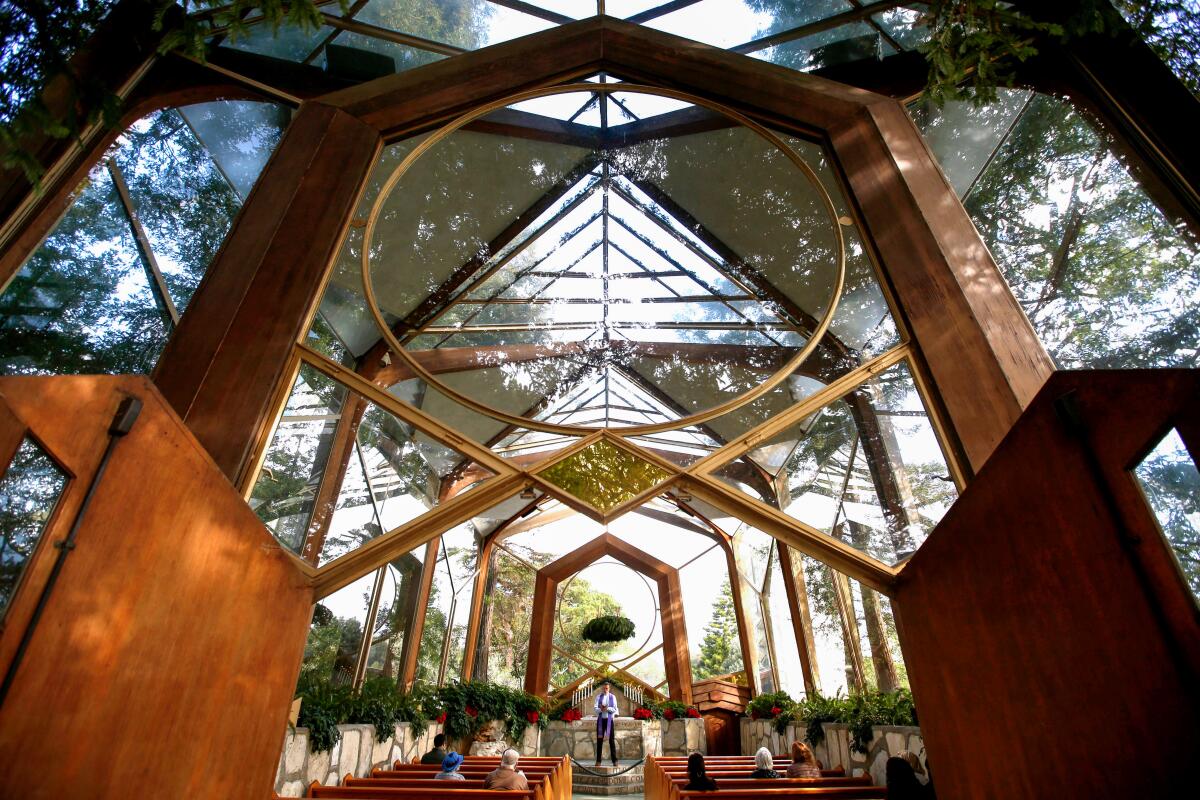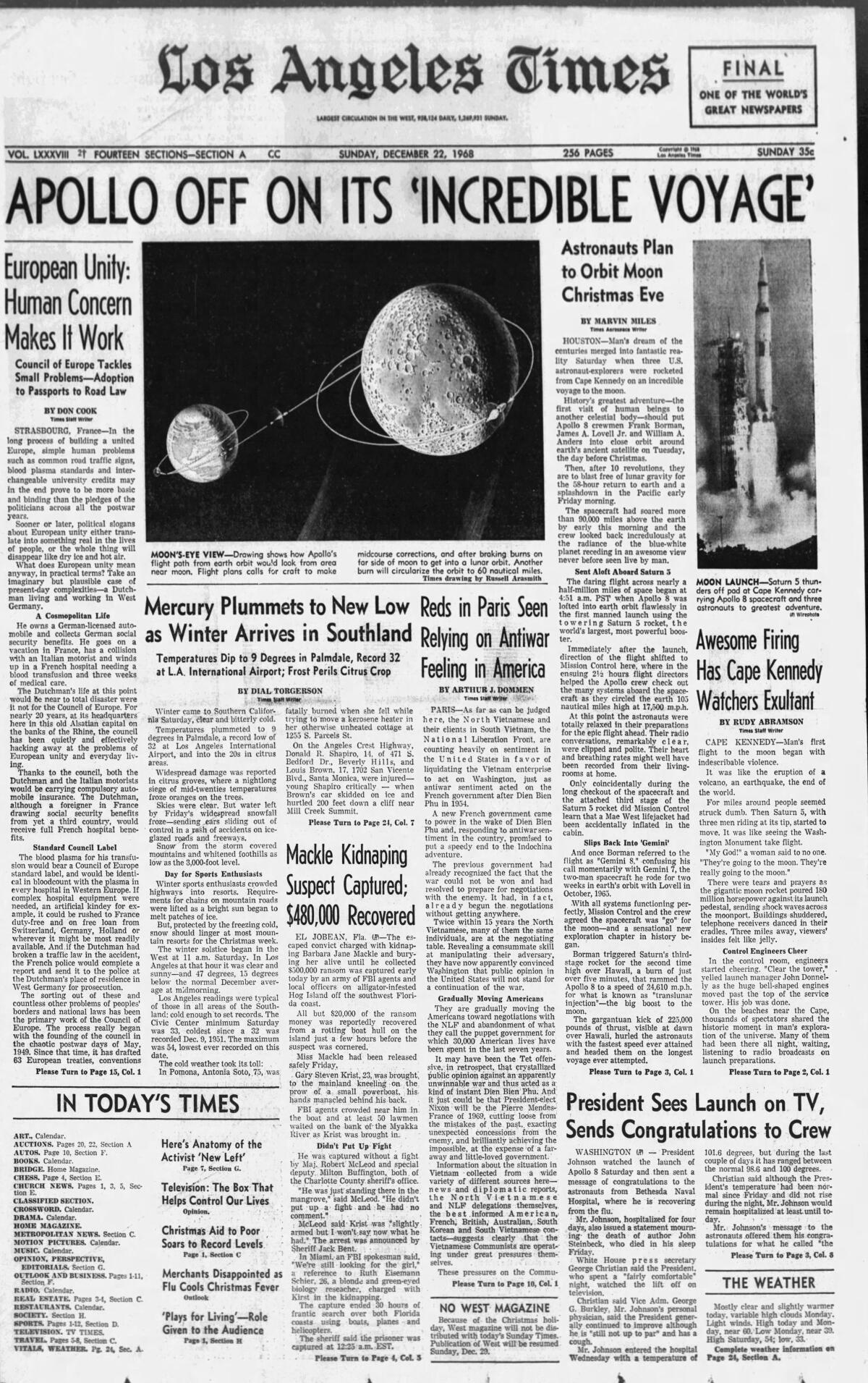As Kern County officials embrace a warehouse boom, some in the community brace for even worse air

- Share via
Good morning. It’s Thursday, Dec. 21. Here’s what you need to know to start your day.
- As Kern County officials embrace a warehouse boom, some brace for even worse air
- Malibu’s PCH is set for safety fixes months after a horrific crash
- 11 cheerful events to celebrate the holiday season
- And here’s today’s e-newspaper
Sign up for Essential California
The most important California stories and recommendations in your inbox every morning.
You may occasionally receive promotional content from the Los Angeles Times.
A(nother) warehouse boom?
Kern County’s economy is rooted in two industries, growing several billions of dollars’ worth of crops and producing about 70% of the state’s oil. But the county’s landscape is starting to grow something else: sprawling warehouses.
Some farmers and landowners in the agriculturally rich Central Valley are turning their plowed fields into graded acres for massive logistics facilities to store and ship products across the U.S.
Employment at warehouses in Kern County has been on the rise in recent years. But Times reporter Rebecca Plevin noted that a considerable boom could be coming, thanks to state water regulations “that are now forcing farmers to make tough decisions about their properties.”
“At the same time, the Inland Empire is maxing out on available land, following the pandemic-era explosion of e-commerce, prompting warehouse investors to look elsewhere,” she wrote in her latest story.
And the promise of less populated, cheap land near major freeways in the Central Valley is drawing eager investors.
“One million-square-foot facilities are the future,” Herb Grabell, an Irvine-based industrial land real estate advisor and senior vice president for Kidder Mathews, told Rebecca. “Kern County, if planned correctly, is unlimited.”
More jobs, more air pollution
The impending warehouse boom in Kern County mirrors what’s been happening in San Bernardino and Riverside counties. Giant warehouses stretch through vast sections of the Inland Empire and diesel-burning big rigs clog roads as they spew exhaust through neighborhoods.
Times reporters visited the warehouse-covered region earlier this year, noting that residents question “whether they want the region’s economy, health, traffic and general ambiance tied to a heavily polluting, low-wage industry that might one day pick up and leave as global trade routes shift.”
In the Inland Empire, dozens of community groups and organizations focused on environmental justice united in opposition to the warehouse sprawl, calling on Gov. Gavin Newsom to declare a public health emergency and place a moratorium on warehouse construction. But the community reaction in Kern County has been mostly muted.
And the environmental effects could be serious. New warehouses will generate more heavy truck trips in a region that already has the absolute worst particle pollution in the U.S., according to the American Lung Assn.’s 2023 State of the Air report. Kern County maintained its long-held F grade, topping the list for both daily and annual emissions of fine particles of chemicals, metals, dust, pollen and more floating in the air.
Nearly 14% of Kern County’s residents have a lung or cardiovascular disease, according to estimates in the association’s report.
Environmental justice advocate Gustavo Aguirre told Rebecca he worries that air quality will go from worst to even worse — and that residents might not fully understand the health impacts until they’re breathing it in.
“Going from being very dependent on oil to being very dependent on distribution centers is only changing the name of the problem we have here,” he said.
Some community advocates voiced concerns about those health impacts last year when they fought against a development project in Bakersfield that includes a 1-million-square-foot warehouse. That didn’t dissuade the City Council, which unanimously approved the project. Chris Parlier, the council member representing the area of the project, said the new jobs it would bring “outweigh so many things.”
That speaks to political and business leaders’ embrace of warehouses as job creators that will be essential to agricultural and oil workers seeking new opportunities as their current industries change.
And although some workers Rebecca spoke with welcome warehouse work as a more reliable source of income compared with seasonal- and weather-dependent farm work, the pay and working conditions aren’t necessarily an improvement.
Rebecca pointed to an analysis by the UC Merced Community and Labor Center, which found that nearly 4 in 10 warehouse workers in Kern County made less than a living wage, defined as the amount necessary “to avoid chronic and severe housing and food insecurity.”
And in sunny California, warehouse work can be hazardous during heat waves, as Times business reporter Suhauna Hussain examined last year. Across the nation, Amazon has faced both public scrutiny and government fines for hazardous working conditions. Attempts by workers to secure better pay and safer warehouses have been met with fierce crackdowns.
You can read more from Rebecca on the new warehouse frontier in Kern County and how residents there are preparing for it.
Today’s top stories

- After an October crash that killed four Pepperdine students, safety upgrades are planned for the Pacific Coast Highway in Malibu.
Trump on the ballot
- Former President Trump’s surprise disqualification from Colorado’s primary ballot probably is headed to the Supreme Court. California Democrats are hoping their state will be added to the docket.
- Trump’s fate rests with the U.S. Supreme Court in two unprecedented cases.
Israel-Gaza war
- Pro-Palestinian UC students feel they are not supported. Some on the faculty are organizing to change that.
- ‘This is not a pro-Hamas protest’: Palestinian Americans fight charges of antisemitism.
Business
- Executives at Warner Bros. Discovery and Paramount have met to discuss a potential merger. Here’s what that could mean for Hollywood.
- A Culver City-based developer that specializes in bringing capital to low-income communities has been selected to renovate the landmark General Hospital building in Boyle Heights.
- Activision Blizzard Chief Executive Bobby Kotick will leave his post at the end of December, bringing his 32-year tenure at the gaming giant to a close.
Policing and crime
- Two detectives in the Los Angeles Police Department’s Internal Affairs Division say they were ordered to investigate Mayor Karen Bass shortly after her election at the behest of Chief Michel Moore, allegations the chief has strongly denied.
- Starting Jan. 1, California police officers will have to tell drivers why they’ve been pulled over before questioning them on any subject.
- How ex-NBA player Chance Comanche confessed to strangling a woman in Vegas.
- A federal judge has blocked a California law that would bar guns in many public places.
SoCal weather
- Southern California residents can expect heavy rain, thunderstorms, and flooding on roadways and creeks as a slow-moving winter storm system lingers over the region through Friday.
- When will worst of rains hit L.A.? What are the flood risks?
More big stories
- Ozempic overdose? Poison control experts explain why thousands OD’d this year.
- LGBTQ+ Angelenos and allies see progress in the Vatican’s blessings for same-sex couples.
- Orange County returned six acres of land to the Acjachemen and Tongva people. Tribal leaders say it’s a small step in a movement to protect their heritage.
- Record air travel, dropping gas prices: How to get through one of the busiest holiday travel seasons.
- California cops and firefighters are taking their pensions to Idaho’s ‘Little Orange County,’ a small-government, Republican boomtown.
- Some Mexican pharmacies are selling full bottles of Adderall. But it’s actually meth.
Get unlimited access to the Los Angeles Times. Subscribe here.
Commentary and opinions
- LZ Granderson: ChatGPT hasn’t fueled cheating in schools. Do teens know something adults don’t?
- Sammy Roth: Who will make sure L.A. reaches 100% clean energy by 2035?
- Opinion: Colorado’s ruling against Trump raises questions only the Supreme Court can answer.
- Opinion: Coal mines had canaries. To see climate dangers, look to chickadees.
- Editorial: No immunity for Trump. Former presidents don’t have a ‘get-out-of-jail-free’ card.
- Opinion: Can the Church of England’s and Pope Francis’ strides on same-sex marriage help save dying institutions?
Today’s great reads
This weed killer is banned in 50 countries. U.S. workers say it’s giving them Parkinson’s. The herbicide is paraquat, an extremely powerful weed killer that Gary Mund sprayed on vegetation as part of his job from about 1980 to 1985. Mund contends the product is responsible for his Parkinson’s disease, but the manufacturer denies there is a causal link between the chemical and Parkinson’s.
Other great reads
- What will happen to the MCU without Jonathan Majors? How Marvel might shake things up.
- They just wanted to build a bike park. Their surprise mission? Restoring Santa’s Village.
- Jewish Latinos reflect on identity, ancestry and a year of violence.
- For tree vendors of New York City, Christmas is serious business. Do not crash their turf.
How can we make this newsletter more useful? Send comments to essentialcalifornia@latimes.com.
For your downtime

Going out
- ⛪ The most Instagrammable chapel in L.A. is now a historic landmark.
- 🎄The holiday season isn’t over yet. Here are 11 cheerful events to keep the magic going.
- 🏃 You don’t have to join Soho House to enjoy its free run club (and postrun avocado toast).
- 🥟 This global soup dumpling contender is coming to L.A. Is it ready for prime time?
Staying in
- 📺 Disney’s ambitious YA yarn ‘Percy Jackson and the Olympians’ — now streaming on Disney+ — never puts a foot wrong.
- 🧑🍳 Here’s a recipe for holiday crescent cookies.
- ✏️ Get our free daily crossword puzzle, sudoku, word search and arcade games.
And finally ... from our archives

Fifty-five years ago today, the Apollo 8 spacecraft took off on its incredible voyage, marking the first time humans left low Earth orbit and flew to the moon.
In the Dec. 7 issue of Essential California, we shared the Los Angeles Times’ front page from Dec. 8, 1941, announcing the Japanese attack on Pearl Harbor. We should have given our Essential California readers a heads up that the page’s main headline used a racist slur for Japanese people. Although we enjoy sharing L.A. Times history with you, we also recognize that some of that material may disturb or offend. We should have acknowledged that the headline from Dec. 8, 1941, fell into that category. The headline also falls into the category of things we published long ago that we are not proud of today. Please continue sending thoughts and feedback so we can better inform and serve you. Enjoy your day.
Have a great day, from the Essential California team
Ryan Fonseca, reporter
Elvia Limón, multiplatform editor
Kevinisha Walker, multiplatform editor
Laura Blasey, assistant editor
Karim Doumar, head of newsletters
Check our top stories, topics and the latest articles on latimes.com.
Sign up for Essential California
The most important California stories and recommendations in your inbox every morning.
You may occasionally receive promotional content from the Los Angeles Times.





